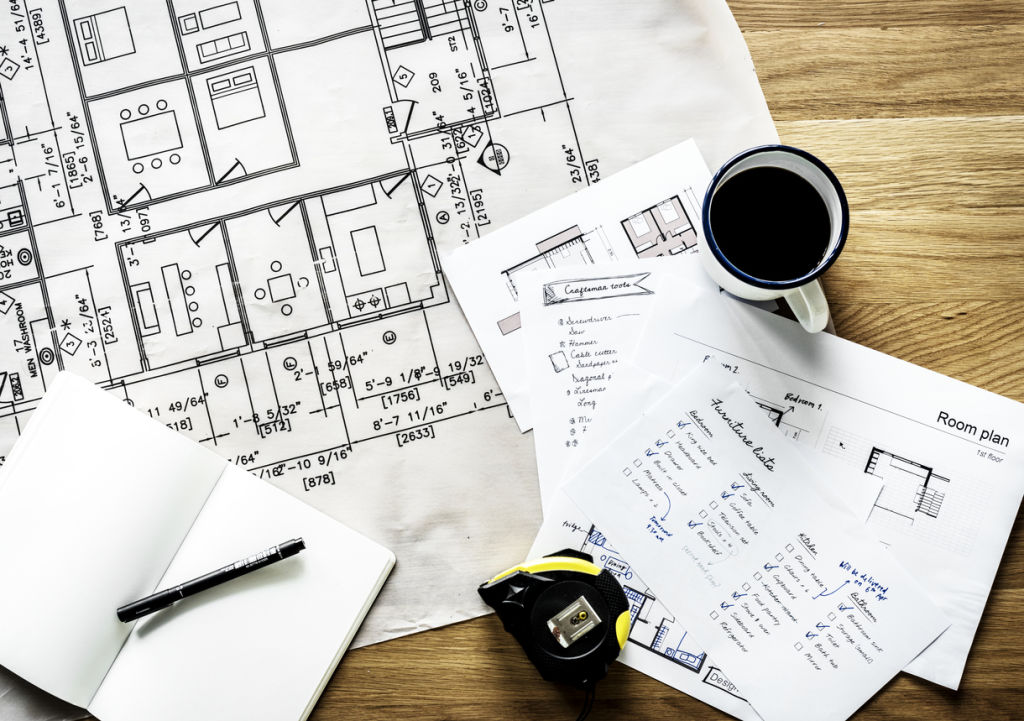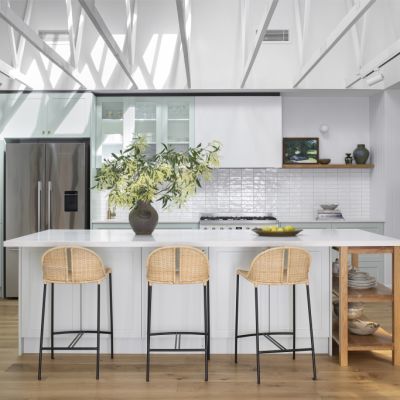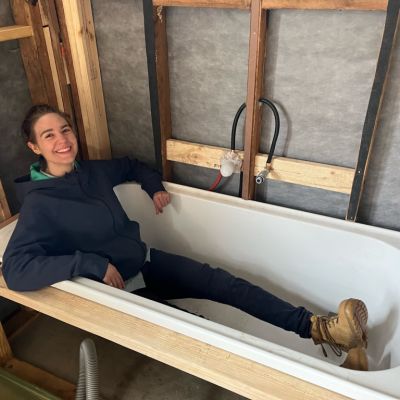Tools of the trade that every aspiring renovator needs
If you’ve ever renovated a home, then I don’t need to tell you how hard it is. It comes with huge rewards and satisfaction but it’s also physically, mentally, and emotionally taxing. However, there are a few things that soon-to-be renovators will need to make the experience bearable, maybe even enjoyable (or is that a stretch?).
I had to learn these things the hard way, but I’m sharing these with you now so you won’t have to be like me.
1. A budget
I know, gross! No one wants to think about how much a renovation is going to cost. We just want to fantasise about those beautiful new surfaces and abundance of storage, not the pesky details like how we’re going to afford it. But, I can tell you from experience that if you don’t have a cost guide you will get to the end of your reno and not have enough in the kitty for window furnishings – which might mean that the $70,000 worth of windows you just installed will be finished with tacked-up bed sheets.
Having a budget, even if it’s loose, helps you see costs in a snapshot and prompts you to question what you really need – and what you don’t – before it’s too late to turn back.
2. A sample box

In the interior design game, when we deliver our clients a concept design, we equip them with a digital presentation as well as a physical sample of every material and product specified in the design. It takes time to order all the samples and, in some cases, suppliers will require that you pay for them (if you’re not a trade customer), but it’s definitely worth it to ensure you know what you’re getting.
Make sure your sample box includes all your paint drawdowns. These are A4 cards with your selected paint colour which you can order from paint suppliers for a small fee. These should be stuck on the wall you plan to paint and be observed over a 15-hour period to view the paint in the changing light before you hit “go”.
3. Perspective
There is one thing that all renovations have in common, and that is: things won’t always go to plan.
Sometimes, someone will be to blame, and other times, it’s just one of those things that can and do happen.
In those moments, you’re going to have to ask yourself a few questions. Can you accept the mistake or change? At whose cost will the problem be amended? Is it really a problem? Is there a compromise? Can you live with the compromise?
Sometimes the detail will matter and sometimes it won’t. Keep your eye on the bigger picture. Different isn’t always worse.
4. Printed plans

During a renovation, the only thing you’ll be grabbing more than your credit card is your floor plan.
There is every chance that every time one of your tradespeople asks you a question, you’ll need to refer to your plans. Print out multiple A3 copies and keep them in a safe spot, not floating around site, because they will almost certainly go missing. Plans are hot property on a job site.
5. Schedules
A schedule in the design and reno game refers to a spreadsheet of all your product names, product codes, images, suppliers and supplier contact details.
We typically delineate schedules into FF&E (fixtures, fittings and equipment), finishes and lighting. If you’ve engaged an architect or interior designer, they will have provided you with these, but otherwise, it’s something you’ll need to do yourself. I won’t lie, it’s a lot of work pulling these together but if you’ve engaged a builder, many will require these from you anyway.
If you’re project-managing your reno independently, I promise, you won’t regret having done the work when trades start asking you questions at 6.30am before caffeine. It will ensure you’re completely across everything and will also help to make sure everything is on site and ready for your trades. You don’t want your trades waiting and looking for parts that you should have supplied. They won’t be happy and it will upset timelines.
6. Steadfastness

If you’re project-managing a renovation yourself, sans a designer, you’re going to need to be resilient.
Experience has taught me that your tradespeople will almost always want to weigh in on your choices (especially your colour choices) and you’re going to need to be researched and confident enough to know when their opinions should be discarded or are worthy of implementation.
I had a friend recently project manage her own bathroom renovations according to our design, and they were met with opinions on wall colours, splashback heights, and even grout colours. She was lucky to have a designer to keep her steadfast, but if you don’t and people are coming at you with contrary advice, it’s very stressful.
Despite the best intentions of your tradespeople (and often family members and friends, too), everyone is only as good as their experience; you need to remember this is your home and the chances are you’ve spent more time thinking about it than anyone else. Hold strong.
Interior design, styling and renovation expert Carlene Duffy first appeared on our TV screens in 2014 with husband Michael as part of Channel 9’s The Block Glasshouse and Reno Rumble.
Since then, she has been a constant on Australian screens as host of 9 Life’s Ready Set Reno, Open Homes Australia and Renovate or Rebuild.
Led by a passion for interior design, Carlene runs Cedar and Suede, a full-service interior design studio based on the Gold Coast.
We recommend
States
Capital Cities
Capital Cities - Rentals
Popular Areas
Allhomes
More










